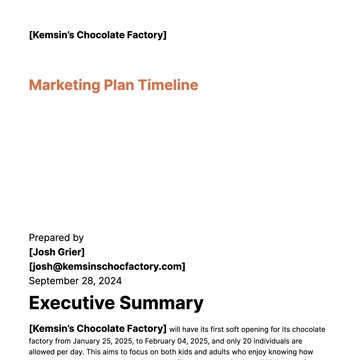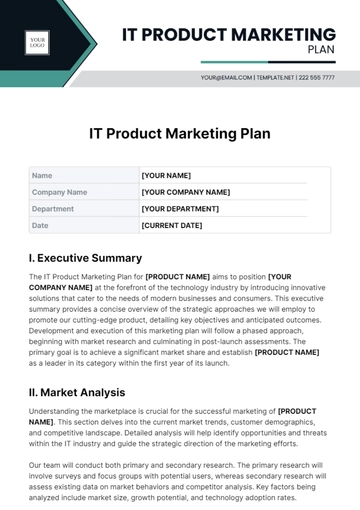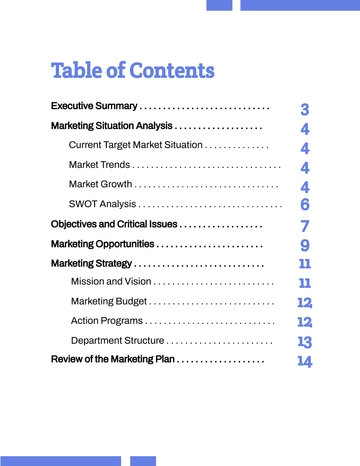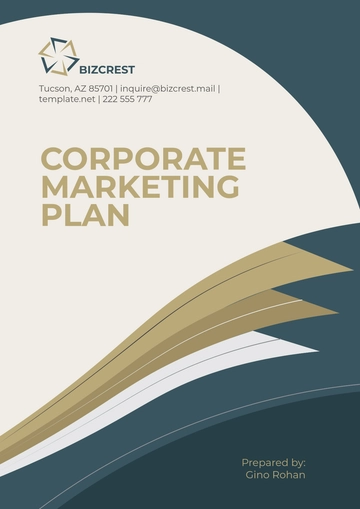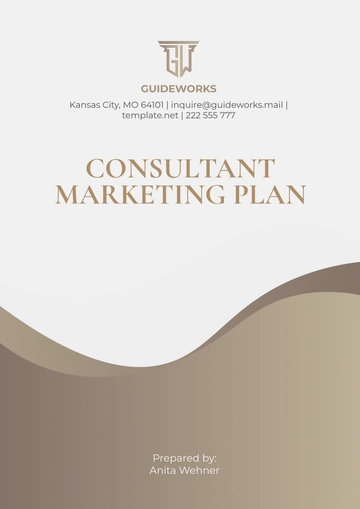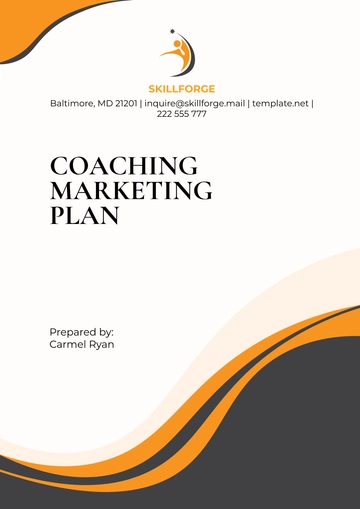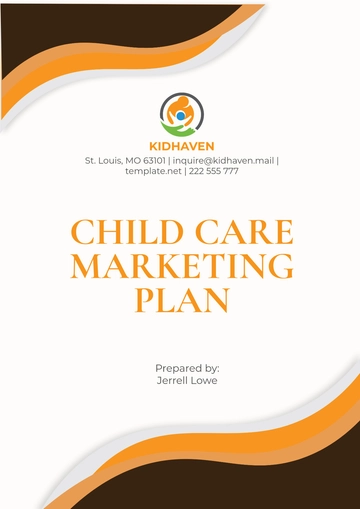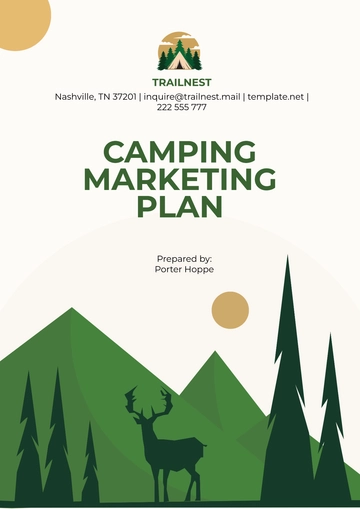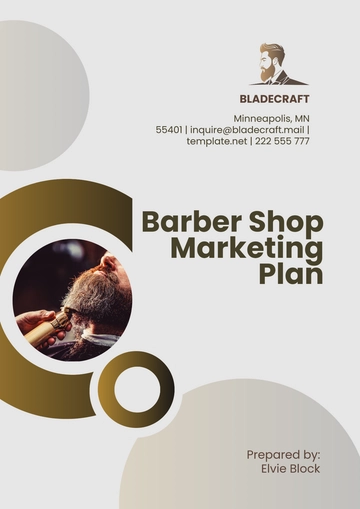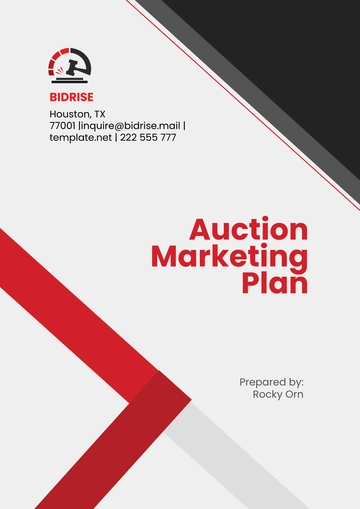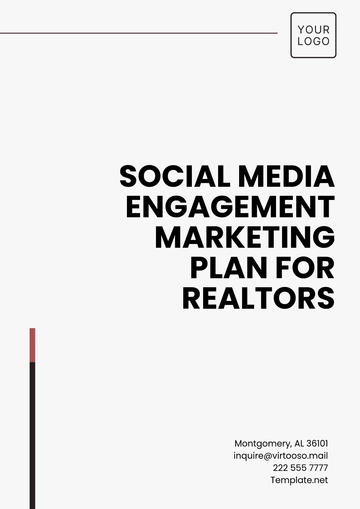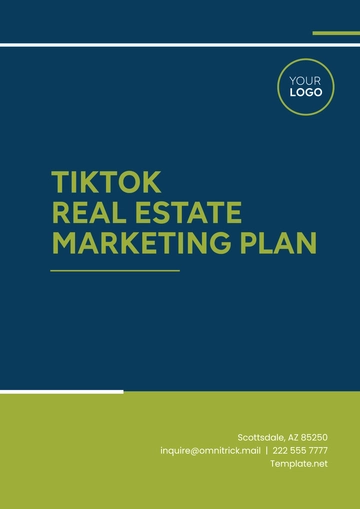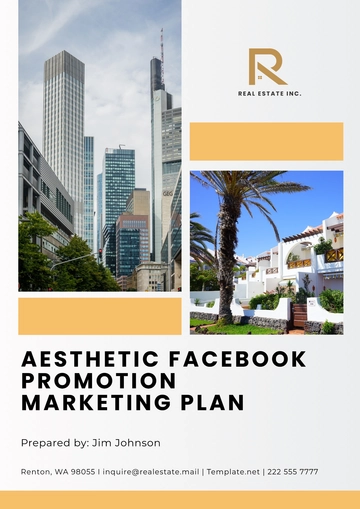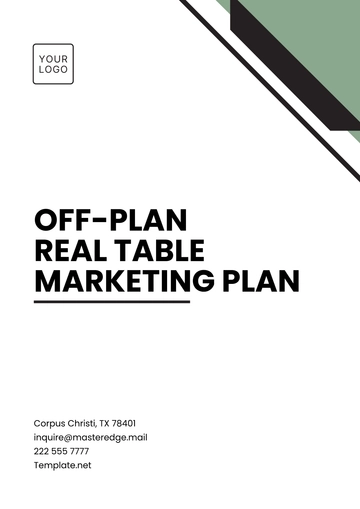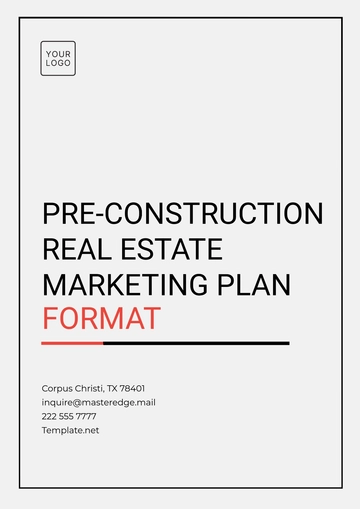Free Movie Theater Marketing Plan
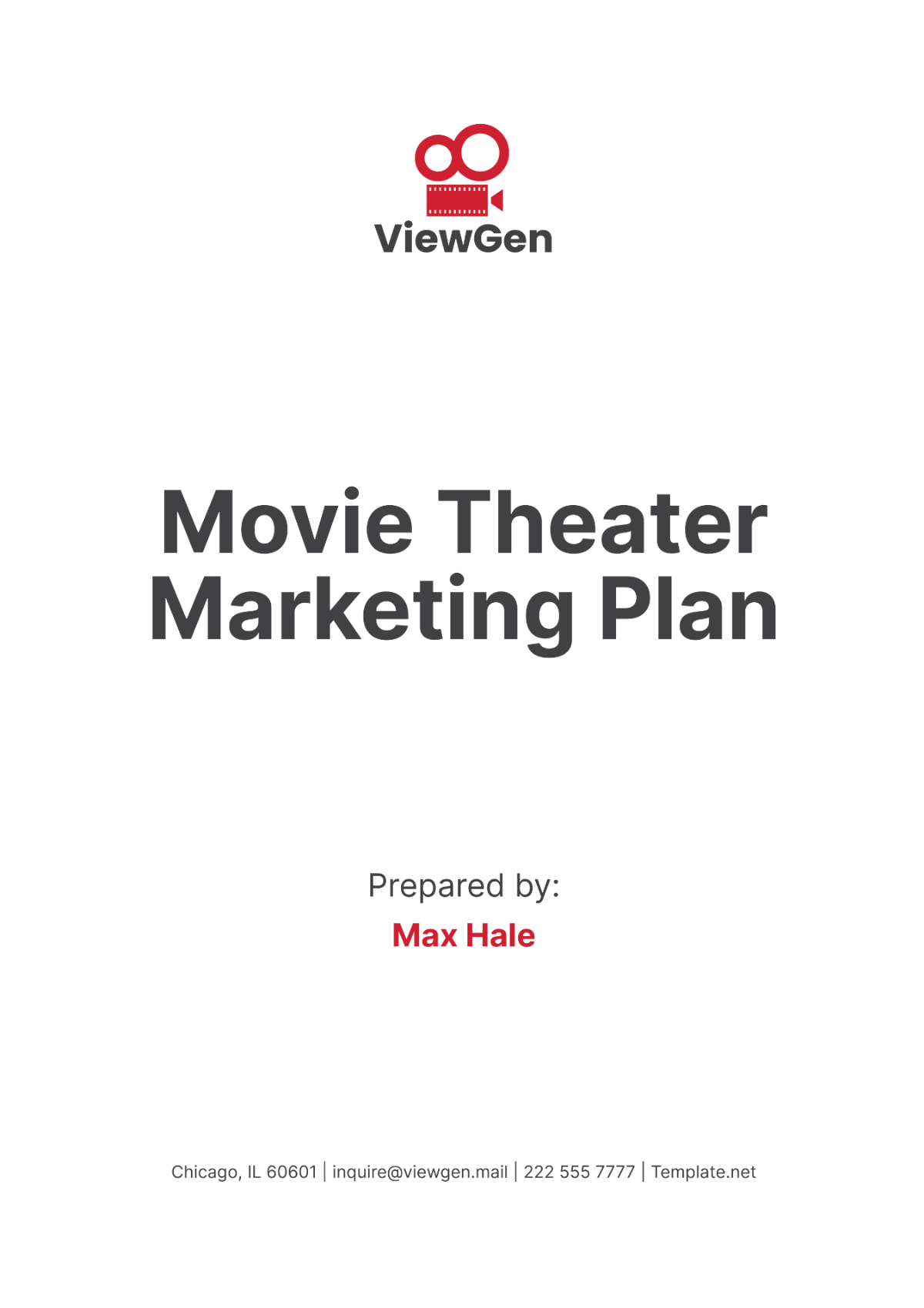
I. Executive Summary
This Movie Theater Marketing Plan of [Your Company Name] for the year 2053 outlines strategic initiatives to drive customer engagement, increase ticket sales, and enhance brand loyalty. With a focus on leveraging cutting-edge technology and personalized marketing, our goal is to create an unparalleled movie-going experience. This plan includes targeted marketing campaigns, partnerships, and promotional activities aimed at attracting diverse audiences.
Our key initiatives include implementing advanced data analytics to understand customer preferences, launching a loyalty program to reward frequent visitors, and enhancing our online presence through social media and a mobile app. We have allocated a total budget of $1,500,000 for these marketing activities, with a projected revenue increase of 20% by the end of 2053.
This marketing plan also includes a detailed timeline for execution, starting with the launch of our revamped website in Q1, followed by a series of promotional campaigns throughout the year. We will continuously monitor the effectiveness of our strategies through Key Performance Indicators (KPIs) such as ticket sales, customer satisfaction, and social media engagement.
II. Market Analysis
A. Industry Overview
Growth Trends: The movie theater industry has seen a resurgence post-pandemic, with a projected annual growth rate of 5% over the next five years. This growth is driven by the increasing popularity of immersive experiences and premium formats.
Consumer Preferences: Consumers are increasingly seeking unique and high-quality viewing experiences. Preferences are shifting towards theaters offering luxury seating, advanced sound systems, and diverse food and beverage options.
Technology Integration: The integration of technology in theaters, such as virtual reality (VR) and augmented reality (AR), is becoming a key differentiator. These technologies enhance the overall movie-going experience and attract tech-savvy audiences.
Competitive Landscape: The industry is highly competitive, with major players investing heavily in marketing and technology. Smaller theaters need to differentiate themselves through niche offerings and personalized services.
B. Target Audience
Demographics: Our primary target audience includes young adults aged 18-35, families with children, and seniors aged 60 and above. This diverse demographic ensures a steady stream of customers throughout the week.
Psychographics: Our audience values unique and high-quality entertainment experiences. They are tech-savvy, socially active, and responsive to personalized marketing efforts.
Behavioral Segmentation: Frequent movie-goers, occasional visitors, and those seeking premium experiences form the core of our audience. Understanding their behavior helps tailor our marketing efforts effectively.
Geographic Segmentation: We target urban and suburban areas with high population density and disposable income. These locations ensure a steady flow of customers and high ticket sales.
C. SWOT Analysis
The following table outlines the strengths, weaknesses, opportunities, and threats (SWOT) for [Your Company Name]:
Component | Details |
|---|---|
Strengths | Strong brand reputation, strategic location |
Weaknesses | High operational costs, limited online presence |
Opportunities | Growing demand for premium experiences, tech integration |
Threats | Intense competition, changing consumer preferences |
Strengths: Our strong brand reputation and strategic location are significant advantages. We have established a loyal customer base and are situated in a high-traffic area, ensuring steady footfall.
Weaknesses: High operational costs and a limited online presence pose challenges. Reducing costs and enhancing our digital marketing efforts are essential to address these weaknesses.
Opportunities: The growing demand for premium experiences and the integration of advanced technologies present significant opportunities. We can leverage these trends to attract new customers and increase revenue.
Threats: Intense competition and changing consumer preferences are major threats. Staying ahead of competitors and adapting to evolving trends are crucial to mitigate these threats.
Our SWOT analysis highlights the need to build on our strengths, address weaknesses, seize opportunities, and mitigate threats. By focusing on these areas, we can enhance our market position and achieve our marketing goals.
III. Marketing Objectives
A. Increase Ticket Sales
Targeted Campaigns: Launch targeted marketing campaigns to attract diverse audience segments. These campaigns will focus on promoting blockbuster releases, special events, and premium experiences.
Promotional Offers: Introduce promotional offers such as discounted tickets, combo deals, and loyalty rewards. These offers will incentivize repeat visits and attract price-sensitive customers.
Partnerships: Establish partnerships with local businesses and organizations to drive ticket sales. Collaborations with schools, corporates, and community groups can boost group bookings and special events.
Online Ticketing: Enhance our online ticketing system to provide a seamless booking experience. This includes a user-friendly website, mobile app, and integration with popular payment gateways.
B. Enhance Brand Awareness
Social Media Engagement: Increase our social media presence through engaging content, contests, and influencer collaborations. This will help build brand awareness and foster a community of loyal followers.
Content Marketing: Develop a content marketing strategy that includes blog posts, videos, and newsletters. This content will highlight new releases, behind-the-scenes stories, and exclusive interviews.
Public Relations: Implement a proactive public relations strategy to secure media coverage and positive reviews. Press releases, media events, and partnerships with local influencers will boost our visibility.
Sponsorships: Sponsor local events and community activities to enhance our brand presence. This will create goodwill and position us as a community-focused business.
C. Improve Customer Retention
Loyalty Program: Launch a loyalty program to reward frequent visitors with exclusive benefits such as free tickets, concessions, and early access to premieres. This will encourage repeat visits and build customer loyalty.
Customer Feedback: Implement a system to collect and act on customer feedback. Surveys, suggestion boxes, and online reviews will help us understand customer preferences and improve our services.
Personalized Marketing: Use data analytics to deliver personalized marketing messages. Tailored recommendations, birthday offers, and personalized discounts will enhance the customer experience.
Enhanced Amenities: Invest in enhanced amenities such as luxury seating, gourmet food options, and interactive experiences. These upgrades will provide a premium experience and encourage repeat visits.
IV. Marketing Strategies
A. Digital Marketing
Website Optimization: Revamp our website to provide a seamless user experience. This includes a responsive design, easy navigation, and integrated ticketing system.
SEO and SEM: Implement search engine optimization (SEO) and search engine marketing (SEM) strategies to increase online visibility. This includes keyword optimization, content creation, and paid advertising campaigns.
Email Marketing: Develop an email marketing strategy to engage with our audience. Regular newsletters, promotional emails, and personalized offers will keep our customers informed and engaged.
Social Media Campaigns: Launch targeted social media campaigns to promote new releases, special events, and offers. Engaging content, contests, and influencer collaborations will drive engagement and conversions.
B. Traditional Marketing
Print Advertising: Invest in print advertising in local newspapers, magazines, and community newsletters. This will help reach a broader audience and drive awareness.
Radio and TV Ads: Run radio and TV ads to promote new releases and special events. These ads will reach a wide audience and create buzz around our offerings.
Billboards and Posters: Use billboards and posters in high-traffic areas to promote our theater and upcoming releases. Eye-catching designs and strategic placements will maximize visibility.
Flyers and Brochures: Distribute flyers and brochures in local businesses, community centers, and events. These materials will provide detailed information about our theater and promotions.
C. Community Engagement
Local Partnerships: Partner with local businesses and organizations to promote our theater. This includes co-promotions, sponsorships, and collaborative events.
Charity Events: Host charity events and fundraisers to support local causes. This will create goodwill and position us as a community-focused business.
School Programs: Develop programs for schools, such as educational screenings and field trips. These programs will attract school groups and create a positive image among families.
Community Events: Participate in local festivals, fairs, and community events. Setting up booths, offering free screenings, and engaging with attendees will boost our visibility and brand reputation.
V. Budget Allocation and Timeline
A. Budget Allocation
The following chart and table outline the budget allocation for our marketing activities:
Activity | Budget |
|---|---|
Digital Marketing | $500,000 |
Traditional Marketing | $400,000 |
Community Engagement | $200,000 |
Customer Retention Programs | $200,000 |
Contingency Fund | $200,000 |
Total | $1,500,000 |
Digital Marketing: A significant portion of the budget ($500,000) is allocated to digital marketing. This includes website optimization, SEO, SEM, email marketing, and social media campaigns. Digital marketing is crucial for reaching our tech-savvy audience and driving online ticket sales.
Traditional Marketing: $400,000 is allocated to traditional marketing activities such as print advertising, radio and TV ads, billboards, and flyers. These channels are effective for reaching a broader audience and creating awareness.
Community Engagement: $200,000 is dedicated to community engagement initiatives. Partnering with local businesses, hosting charity events, and participating in community activities will help build a positive brand image.
Customer Retention Programs: $200,000 is allocated to customer retention programs such as the loyalty program, enhanced amenities, and personalized marketing efforts. These initiatives will encourage repeat visits and build customer loyalty.
Contingency Fund: A contingency fund of $200,000 is set aside to address unexpected expenses or opportunities. This ensures financial flexibility and stability.
B. Timeline
The following table outlines the timeline for implementing our marketing plan:
Activity | Timeline |
|---|---|
Website Revamp | Q1 2053 |
SEO and SEM Campaigns | Q1-Q4 2053 |
Social Media Campaigns | Q1-Q4 2053 |
Print Advertising | Q1-Q4 2053 |
Radio and TV Ads | Q2-Q4 2053 |
Community Partnerships | Q1-Q4 2053 |
Loyalty Program Launch | Q2 2053 |
School Programs | Q2-Q4 2053 |
Charity Events | Q3-Q4 2053 |
Website Revamp: The website revamp is scheduled for Q1 2053. This will provide a strong foundation for our digital marketing efforts and enhance the user experience.
SEO and SEM Campaigns: These campaigns will run throughout the year (Q1-Q4 2053) to continuously improve our online visibility and drive traffic to our website.
Social Media Campaigns: Social media campaigns will also run throughout the year (Q1-Q4 2053), with a focus on promoting new releases, special events, and offers.
Print Advertising: Print advertising will be ongoing (Q1-Q4 2053) to maintain a steady presence in local newspapers, magazines, and newsletters.
Radio and TV Ads: These ads will be launched in Q2 2053 and continue through the end of the year to create awareness and buzz around our theater.
Community Partnerships: Partnerships with local businesses and organizations will be established throughout the year (Q1-Q4 2053) to enhance our community presence.
Loyalty Program Launch: The loyalty program is scheduled to launch in Q2 2053, providing exclusive benefits to frequent visitors and encouraging repeat visits.
School Programs: These programs will start in Q2 2053 and continue through the end of the year, attracting school groups and families.
Charity Events: Charity events will be hosted in Q3 and Q4 2053 to support local causes and build a positive brand image.
VI. Key Performance Indicators (KPIs)
A. Financial KPIs
Revenue Growth: Measure the increase in ticket sales and overall revenue. The goal is to achieve a 20% increase in revenue by the end of 2053. Regular tracking and analysis of revenue data will help assess the effectiveness of our marketing efforts.
Return on Investment (ROI): Calculate the ROI for each marketing activity. This helps determine the cost-effectiveness of our campaigns and guides future budget allocation. Analyzing ROI ensures that our marketing spend is optimized.
Cost Per Acquisition (CPA): Track the cost of acquiring new customers. This metric helps evaluate the efficiency of our marketing campaigns in attracting new customers. Lowering CPA is a key objective to ensure efficient use of resources.
Average Transaction Value (ATV): Monitor the average transaction value for ticket and concession sales. Increasing ATV through upselling and cross-selling strategies is crucial for maximizing revenue.
B. Customer KPIs
Customer Retention Rate: Measure the percentage of customers who return to our theater. A high retention rate indicates customer satisfaction and loyalty. Retention strategies will focus on enhancing the customer experience and rewarding loyalty.
Net Promoter Score (NPS): Assess customer satisfaction and willingness to recommend our theater. A high NPS reflects positive customer experiences and strong brand advocacy. Regular NPS surveys will provide valuable insights into customer perceptions.
Customer Acquisition Rate: Track the rate at which new customers are acquired. This metric helps evaluate the success of our marketing efforts in attracting new customers. Increasing acquisition rates is essential for expanding our customer base.
Social Media Engagement: Monitor engagement metrics such as likes, shares, comments, and followers on social media platforms. High engagement indicates effective social media marketing and strong audience interaction.
C. Operational KPIs
Occupancy Rate: Measure the percentage of seats filled during screenings. High occupancy rates indicate effective marketing and strong demand for our offerings. Strategies to optimize occupancy include targeted promotions and flexible pricing.
Concession Sales: Track sales of food and beverages. Increasing concession sales is crucial for maximizing revenue and enhancing the overall customer experience. Offering diverse and appealing concession options will drive sales.
Website Traffic: Monitor the number of visitors to our website. Increasing website traffic through SEO, SEM, and social media efforts is essential for driving online ticket sales. Analyzing traffic sources helps optimize digital marketing strategies.
App Downloads: Track the number of downloads and active users of our mobile app. High app engagement indicates the success of our mobile strategy and enhances customer convenience.
VII. Conclusion and Next Steps
A. Conclusion
This Movie Theater Marketing Plan of [Your Company Name] for the year 2053 aims to enhance our market presence, drive customer engagement, and increase revenue. By leveraging digital marketing, community engagement, and customer retention strategies, we can create a compelling movie-going experience that attracts and retains diverse audiences.
Our plan includes targeted marketing campaigns, strategic partnerships, and enhanced amenities, all supported by a robust budget and timeline. Implementing this plan will position [Your Company Name] as a leading movie theater in our community. By focusing on our strengths, addressing weaknesses, seizing opportunities, and mitigating threats, we can achieve our marketing objectives and ensure long-term success.
B. Next Steps
Launch Website Revamp: Initiate the website revamp project in Q1 2053 to enhance the user experience and improve online ticketing.
Implement SEO and SEM Strategies: Start SEO and SEM campaigns in Q1 2053 to increase online visibility and drive website traffic.
Develop Loyalty Program: Launch the loyalty program in Q2 2053 to reward frequent visitors and encourage repeat visits.
Strengthen Community Partnerships: Establish partnerships with local businesses, schools, and organizations throughout the year to enhance our community presence.
Enhance Social Media Campaigns: Launch targeted social media campaigns in Q1 2053 to promote new releases, special events, and offers.
Conduct Charity Events: Host charity events and fundraisers in Q3 and Q4 2053 to support local causes and build a positive brand image.
Expand Marketing Channels: Explore new marketing channels such as influencer collaborations, sponsorships, and cross-promotions to reach a wider audience.
Monitor KPIs: Continuously monitor key performance indicators (KPIs) to assess the effectiveness of our marketing strategies and make data-driven decisions.
- 100% Customizable, free editor
- Access 1 Million+ Templates, photo’s & graphics
- Download or share as a template
- Click and replace photos, graphics, text, backgrounds
- Resize, crop, AI write & more
- Access advanced editor
Create a comprehensive and tailored marketing strategy with the Movie Theater Marketing Plan Template available only here on Template.net! This editable template allows you to outline marketing initiatives effectively. It is also conveniently customizable to meet your theater’s promotional goals, and the AI Editor Tool ensures easy updates and adjustment!

